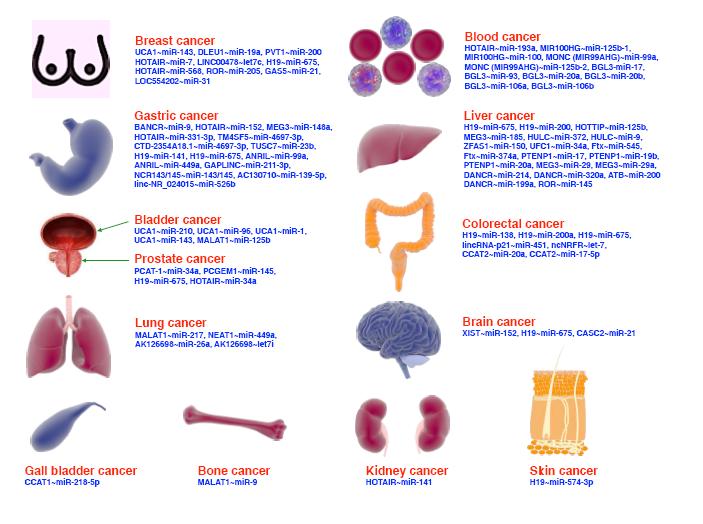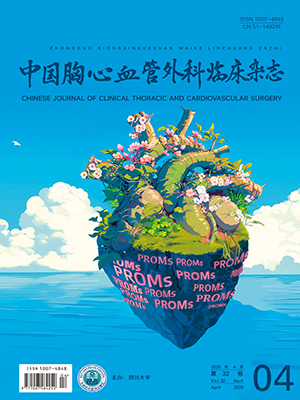| 1. |
Rainer WG. Cardiac surgery before cardiopulmonary bypass. Perfusion, 2003, 18(3): 139-144.
|
| 2. |
Chen J, Wei L, Wang C. The impact of minimally invasive technique on the outcomes of isolated tricuspid valve surgery. Eur Heart J, 2021, 42(19): 1926.
|
| 3. |
Ha B, Usman AA, Augoustides JG. Minimally invasive cardiac surgery-identifying opportunities for further improvement in the quality of postoperative patient recovery. J Cardiothorac Vasc Anesth, 2020, 34(12): 3231-3233.
|
| 4. |
Davidson LJ, Davidson CJ. Transcatheter treatment of valvular heart disease: A review. JAMA, 2021, 325(24): 2480-2494.
|
| 5. |
Kirmani BH, Knowles A, Saravanan P, et al. Establishing minimally invasive cardiac surgery in a low-volume mitral surgery centre. Ann R Coll Surg Engl, 2021, 103(6): 444-451.
|
| 6. |
De Viti D, Dambruoso P, Izzo P, et al. Iatrogenic acute aortic dissection in the era of minimally invasive cardiac surgery: Experience of a center and review of literature. Braz J Cardiovasc Surg, 2021, 36(5): 691-699.
|
| 7. |
Dreyfus G, Windecker S. How to shape the future of cardiology and cardiac surgery? Eur Heart J, 2020, 41(38): 3693-3701.
|
| 8. |
Gaudino M, Benesch C, Bakaeen F, et al. Considerations for reduction of risk of perioperative stroke in adult patients undergoing cardiac and thoracic aortic operations: A scientific statement from the American Heart Association. Circulation, 2020, 142(14): e193-e209.
|
| 9. |
Lee SH, Yoon SJ, Sun BJ, et al. 2023 Korean Society of Echocardiography position paper for diagnosis and management of valvular heart disease, partⅠ: Aortic valve disease. J Cardiovasc Imaging, 2024, 32(1): 34.
|
| 10. |
Coisne A, Lancellotti P, Habib G, et al. ACC/AHA and ESC/EACTS guidelines for the management of valvular heart diseases: JACC guideline comparison. J Am Coll Cardiol, 2023, 82(16): 1648.
|
| 11. |
Zhu J, Zhang Y, Bao C, et al. Individualized strategy of minimally invasive cardiac surgery in congenital cardiac septal defects. J Cardiothorac Surg, 2022, 17(1): 5.
|
| 12. |
Qureshi SH, Ruel M. The 7 pillars of multivessel minimally invasive coronary surgery. Innovations (Phila), 2021, 16(3): 216-217.
|
| 13. |
Karsan RB, Allen R, Powell A, et al. Minimally-invasive cardiac surgery: A bibliometric analysis of impact and force to identify key and facilitating advanced training. J Cardiothorac Surg, 2022, 17(1): 236.
|
| 14. |
Lyons M, Akowuah E, Hunter S, et al. A survey of minimally invasive cardiac surgery during the COVID-19 pandemic. Perfusion, 2022, 37(8): 789-796.
|
| 15. |
Mortada H, Alsuhaim A, Alkhamees N, et al. Periareolar minimally invasive approach for cardiac surgery: A case series and description of technique with a review of literature. J Cardiothorac Surg, 2024, 19(1): 477.
|
| 16. |
Condello I, Santarpino G, Moscarelli M, et al. Toward minimally invasive extracorporeal circulation in oncologic cardiac surgery. Braz J Cardiovasc Surg, 2021, 36(1): 141-142.
|
| 17. |
Gaudino M, Chikwe J, Bagiella E, et al. Methodological standards for the design, implementation, and analysis of randomized trials in cardiac surgery: A scientific statement from the American Heart Association. Circulation, 2022, 145(4): e129-e142.
|
| 18. |
Olsthoorn JR, Heuts S, Houterman S, et al. Minimally invasive approach compared to resternotomy for mitral valve surgery in patients with prior cardiac surgery: Retrospective multicentre study based on the Netherlands Heart Registration. Eur J Cardiothorac Surg, 2022, 62(5): ezac420.
|
| 19. |
Sabatino ME, Okoh AK, Chao JC, et al. Early discharge after minimally invasive aortic and mitral valve surgery. Ann Thorac Surg, 2022, 114(1): 91-97.
|
| 20. |
Huang W, Hou B, Li Q, et al. Comparative efficacy of five surgical methods in the treatment of mitral regurgitation: A systematic review and network meta-analysis. J Card Surg, 2022, 37(1): 186-196.
|
| 21. |
李娟, 蔡庆慧, 李少珂, 等. 3D全胸腔镜在再次心脏瓣膜手术中的应用效果及术后ARI影响因素分析. 中西医结合心脑血管病杂志, 2024, 22(9): 1662-1665.Li J, Cai QH, Li SK, et al. Application effect of 3D total thoracoscopy in redo cardiac valve surgery and analysis of influencing factors of postoperative ARI. Chin J Integr Med Cardio-Cerebrovasc Dis, 2024, 22(9): 1662-1665.
|
| 22. |
Akowuah EF, Maier RH, Hancock HC, et al. Minithoracotomy vs conventional sternotomy for mitral valve repair: A randomized clinical trial. JAMA, 2023, 329(22): 1957-1966.
|
| 23. |
Tang S, Qu Y, Jiang H, et al. Minimally invasive technique facilitates early extubation after cardiac surgery: A single-center retrospective study. BMC Anesthesiol, 2024, 24(1): 318.
|
| 24. |
Rodriguez E, Nifong LW, Bonatti J, et al. Pathway for surgeons and programs to establish and maintain a successful robot-assisted adult cardiac surgery program. Ann Thorac Surg, 2016, 102(1): 340-344.
|
| 25. |
Behinaein P, Antonoff MB. Innovation in cardiothoracic surgery: A team-based recipe for success. J Thorac Cardiovasc Surg, 2023, 166(3): e124-e125.
|
| 26. |
Badhwar V, Wei LM, Geirsson A, et al. Contemporary robotic cardiac surgical training. J Thorac Cardiovasc Surg, 2023, 165(2): 779-783.
|
| 27. |
Kleiman NS, Welt FGP, Truesdell AG, et al. Should interventional cardiologists super-specialize? Moving from patient selection to operator selection. JACC Cardiovasc Interv, 2021, 14(1): 97-100.
|
| 28. |
Agricola E, Ancona F, Bartel T, et al. Multimodality imaging for patient selection, procedural guidance, and follow-up of transcatheter interventions for structural heart disease: A consensus document of the EACVI Task Force on Interventional Cardiovascular Imaging: Part 1: Access routes, transcatheter aortic valve implantation, and transcatheter mitral valve interventions. Eur Heart J Cardiovasc Imaging, 2023, 24(9): e209-e268.
|
| 29. |
Zoghbi WA, Jone PN, Chamsi-Pasha MA, et al. Guidelines for the evaluation of prosthetic valve function with cardiovascular imaging: A report from the American Society of Echocardiography developed in collaboration with the Society for Cardiovascular Magnetic Resonance and the Society of Cardiovascular Computed Tomography. J Am Soc Echocardiogr, 2024, 37(1): 2-63.
|
| 30. |
Baumbach A, Patel KP, Kennon S, et al. A heart valve dedicated for aortic regurgitation: Review of technology and early clinical experience with the transfemoral Trilogy system. Catheter Cardiovasc Interv, 2023, 102(4): 766-771.
|
| 31. |
Kronenberg F. Aortic valve stenosis: The long and winding road. Eur Heart J, 2021, 42(22): 2212-2214.
|
| 32. |
Landmesser U. The changing landscape of aortic-valve stenosis management. N Engl J Med, 2023, 389(21): 2008-2009.
|
| 33. |
Borger MA, Raschpichler M, Makkar R. Repeat aortic valve surgery or transcatheter valve-in-valve therapy: We need a randomized trial. J Am Coll Cardiol, 2020, 76(5): 500-502.
|
| 34. |
中国医师协会心血管内科医师分会结构性心脏病学组, 亚太结构性心脏病俱乐部. 中国经导管主动脉瓣置换术临床路径专家共识(2024版). 中国胸心血管外科临床杂志, 2024, 31(12): 1713-1727.Structural Heart Disease Group of Cardiovascular Physician Branch of Chinese Medical Doctor Association, Asia-Pacific Structural Heart Disease Club. Expert consensus on clinical pathway for transcatheter aortic valve replacement in China (2024 edition). Chin J Clin Thorac Cardiovasc Surg, 2024, 31(12): 1713-1727.
|
| 35. |
Gillinov M, Burns DJP, Wierup P. Commentary: Mitral valve repair wins again. J Thorac Cardiovasc Surg, 2021, 162(1): 83.
|
| 36. |
Chen J, Yang Y, Wei L. One-stage transcatheter aortic valve replacement and transcatheter edge-to-edge repair for aortic and mitral regurgitation. Eur Heart J, 2023, 44(15): 1377.
|
| 37. |
Adamo M, Metra M, Alfieri O. Percutaneous valve repair of functional mitral regurgitation: Aiming at optimal and durable results. Eur J Heart Fail, 2020, 22(10): 1849-1851.
|
| 38. |
Pojar M, Karalko M, Dergel M, et al. Minimally invasive or sternotomy approach in mitral valve surgery: A propensity-matched comparison. J Cardiothorac Surg, 2021, 16(1): 228.
|
| 39. |
亚太心脏病学会(APSC)专家组. 经导管缘对缘技术(MitraClip)治疗二尖瓣反流—亚太心脏病学会(APSC)专家共识. 中国循环杂志, 2022, 37(1): 4-11.Asia-Pacific Society of Cardiology (APSC) Expert Group. Transcatheter edge-to-edge repair (MitraClip) for mitral regurgitation: Expert consensus of the Asia-Pacific Society of Cardiology (APSC). Chin Circ J, 2022, 37(1): 4-11.
|
| 40. |
Sticchi A, Reineke D, Praz F, et al. Transcatheter mitral valve replacement for mitral valve-in-valve, valve-in-ring, and valve-in-MAC using balloon-expandable transcatheter heart valves. JACC Cardiovasc Interv, 2021, 14(8): 873-878.
|
| 41. |
Rodés-Cabau J, Regueiro A, Mack MJ. Transcatheter mitral valve replacement: A need for better patient selection. J Am Coll Cardiol, 2021, 78(19): 1860-1862.
|
| 42. |
Zhang QL, Chen Q, Lin ZQ, et al. Thoracoscope-assisted mitral valve replacement with a small incision in the right chest: A Chinese single cardiac center experience. Med Sci Monit, 2018, 24: 1054-1063.
|
| 43. |
Wild MG, Praz F. Caval valve implantation for advanced tricuspid regurgitation: Closing a therapeutic gap? JACC Cardiovasc Interv, 2022, 15(13): 1378-1381.
|
| 44. |
Maisano F, Hahn R, Sorajja P, et al. Transcatheter treatment of the tricuspid valve: Current status and perspectives. Eur Heart J, 2024, 45(11): 876-894.
|
| 45. |
Lurz P, Kresoja KP. Tricuspid valve therapies: Closing the gap. JACC Cardiovasc Interv, 2021, 14(11): 1241-1242.
|
| 46. |
中国医师协会心血管内科医师分会结构性心脏病学组, 苏州工业园区东方华夏心血管健康研究院. 三尖瓣反流经导管治疗的中国专家共识. 中国介入心脏病学杂志, 2024, 32(10): 551-561.Structural Heart Disease Group of Cardiovascular Physician Branch of Chinese Medical Doctor Association, Suzhou Industrial Park Oriental Cathay Cardiovascular Health Institute. Chinese expert consensus on transcatheter treatment of tricuspid regurgitation. Chin J Interv Cardiol, 2024, 32(10): 551-561.
|
| 47. |
Latib A, Ho EC. Tricuspid valve morphology in transcatheter interventions: Worth a closer look. JACC Cardiovasc Interv, 2021, 14(20): 2271-2273.
|
| 48. |
Davidson LJ, Tang GHL, Ho EC, et al. The tricuspid valve: A review of pathology, imaging, and current treatment options: A scientific statement from the American Heart Association. Circulation, 2024, 149(22): e1223-e1238.
|
| 49. |
Hascoet S, Karsenty C, Fraisse A. Transcatheter pulmonary valve replacement: History is on the move. JACC Cardiovasc Interv, 2024, 17(2): 245-247.
|
| 50. |
Rhodes JF Jr, Veeraswamy R. Expanding transcatheter pulmonary valve therapies. JACC Cardiovasc Interv, 2020, 13(23): 2766-2768.
|
| 51. |
中国医师协会心血管内科医师分会结构性心脏病学组, 亚洲心脏病学会, 国家放射与治疗临床医学研究中心. 经导管肺动脉瓣置换术亚洲专家共识. 中国介入心脏病学杂志, 2023, 31(6): 404-412.Structural Heart Disease Group of Cardiovascular Physician Branch of Chinese Medical Doctor Association, Asian Society of Cardiology, National Clinical Research Center for Interventional Medicine. Asian expert consensus on transcatheter pulmonary valve replacement. Chin J Interv Cardiol, 2023, 31(6): 404-412.
|
| 52. |
Tannous P, Nugent A. Transcatheter pulmonary valve replacement in native and nonconduit right ventricle outflow tracts. J Thorac Cardiovasc Surg, 2021, 162(3): 967-970.
|




